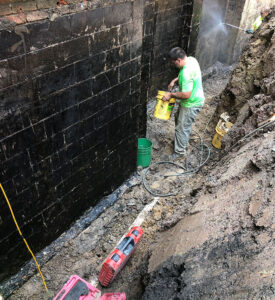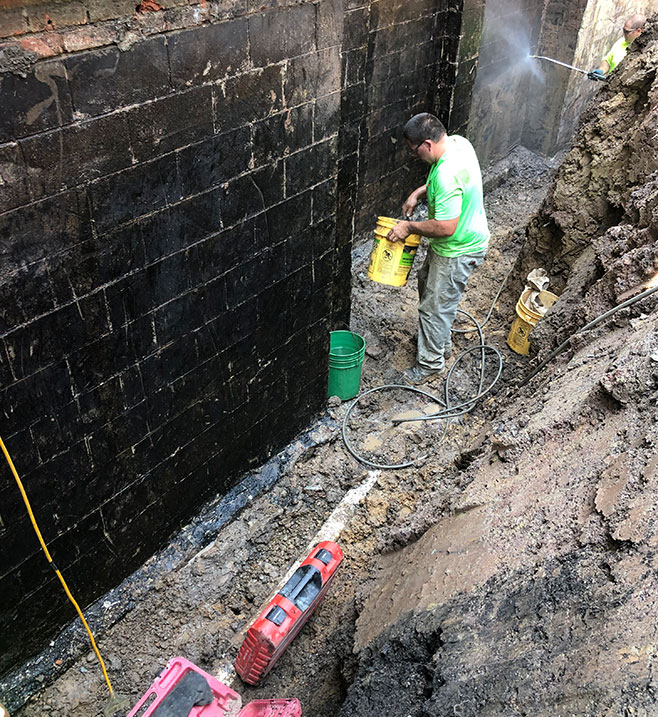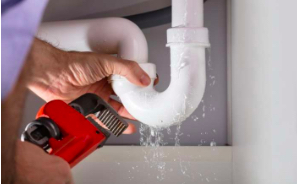If you notice small cracks in a home’s foundation walls, this may be an early warning sign that needs to be assessed by a professional. Even these minimal cracks can impact the value of a home.
A home with sinking or bowing foundations can be significantly more expensive to buy. Significant problems can also affect your loan approval. For professional assistance, consult Sugar Land Foundation Repair Solutions.
When it comes to foundation repair, cracks are one of the most common signs that structural problems are at hand. Generally, any crack that extends across a wall is considered serious and requires professional attention. However, it’s not always easy to know if that crack is indicative of a larger problem. Fortunately, there are some rules of thumb that can help homeowners decide when it is time to call in the pros.
Hairline cracks are relatively minor and usually don’t cause any major structural damage to a home. These cracks are the result of natural expansion and contraction of concrete, and they typically resolve themselves over time. Nevertheless, they can be a sign of moisture problems that should be addressed as soon as possible to prevent future structural issues.
Cracks that are wider than a hairline should be filled with epoxy or polyurethane crack filler to prevent further damage to the structure. This can be done using a caulking gun to force the filler into the entire crack along its length. Depending on the size of the crack and the direction in which it runs, professional installers may use portholes drilled every 4 to 8 inches along the crack to help stabilize it.
Large vertical cracks are a sign of soil settlement. As the soil swells, it puts pressure on foundation walls and can cause them to crack. This can be prevented by installing drainage systems that divert water away from the house’s foundation and by sealing any cracks that admit water.
Horizontal cracks also indicate severe problems. This type of crack usually occurs when a home’s foundation is sinking or shifting. It is typically caused by a combination of soil pressure and water damage. This can be prevented by addressing the root causes of the issue, such as waterproofing and grading.
If you see any of these signs, it is important to contact a foundation repair contractor as soon as possible. A professional will be able to assess the extent of the damage and recommend an appropriate solution. They will be able to provide you with a free, no-commitment estimate on their services.
Leaks
Foundation leaks are a problem that can have serious consequences. Leaks that go unaddressed can cause rot and mold as well as structural damage, so it’s important to call in professionals to fix the problem before it gets worse. The primary source of foundation leaks is excess water in the soil around a home. When the soil becomes over-saturated, it swells up against the foundation walls, exerting pressure that can crack concrete and cause moisture to seep through mortar joints in masonry walls. In order to prevent water from entering the home, it’s important to ensure that gutters are clear of debris and downspouts are extended away from the house, and that the landscape is graded in a way that encourages water flow away from the foundation.
Another common cause of leaks is plumbing problems. If a pipe beneath the foundation bursts or has a major leak, it can lead to high levels of moisture in the ground under the house that can seep into the basement and damage the foundation.
If you have a slab foundation, it’s important to check for puddles around the outside of the home, even if there hasn’t been any rain recently. If the puddles are near specific areas of your home, such as bathrooms or near appliances that use water, this could be an indication that there’s a plumbing leak in those areas. Another potential sign of a leak is an unexplained increase in your water bill. Since leaks are causing the soil to become saturated, it’s not uncommon for that moisture to find its way into your home and can result in higher than normal water bills.
Other causes of water intrusion into the home can include problems during construction and soil that is too loose or too dense for a solid foundation. Construction contractors need to make sure that the soil is properly prepared and compacted before a foundation is poured; it’s also important that they take into consideration the type of soil in the area, as different types of soil are more likely to expand and contract than others.
Shifting Soil
If cracks develop, they may become wider over time as shifting soil presses against the foundation walls. Very thin hairline cracks are usually not a concern but larger ones require an inspection by a professional to determine if the foundation is shifting. A shifting foundation will often result in humps or dips in floors, doors and windows that don’t close properly or bowed walls.
Sometimes a house is built on soil that is not compacted well during new construction. Builders bring in dirt from a different location to fill depressed areas and level the site before building the foundation on top of it. This loose soil has a tendency to compress under the weight of the home, leading to settlement problems. A qualified professional can inspect the soil beneath a home and recommend the best repair method.
Poor drainage is another common cause of shifting soil under a foundation. Water leaking through plumbing pipes softens the soil and causes it to expand and sink under a foundation. This can also lead to leaks that put pressure on a foundation wall and cause it to crack and shift.
Changing weather conditions can also cause soil to shrink and expand. When the weather is hot and dry, expansive clay soils tend to shrink causing the foundation to crack and sink.
When the weather turns cold and wet, the clay soils will swell up, putting pressure on the foundation and causing it to move.
The soil in Texas varies from sandy, well-draining sand to expansive clays with low strength. This makes the state particularly susceptible to soil movement and settling. If the piers under a foundation aren’t extending down to load-bearing strata, flooding or slowly moving groundwater can easily separate a home from its foundation.
If your home has signs of shifting soil, it’s important to have the problem diagnosed by a professional foundation repair company as soon as possible to avoid more extensive damage. A knowledgeable foundation expert can suggest ways to fix the issue including using helical piers, resistance piers and/or push piers that transfer your home’s weight from the shifting soil to bedrock. If the problem is severe, a concrete pile system may be required.
Accessibility
The type of soil your home is built on can significantly increase the cost of a foundation repair. The ideal foundation for your home is one that is well suited to the soil in your area. Foundations that are built on expansive clay or poorly-draining soil can suffer from more severe settlement and require more extensive repairs. This is also true of soil conditions that change over time due to weather changes. These factors can impact the timeline and total cost of your foundation repair project.
Getting an accurate estimate of the cost of a foundation repair requires a visit to the property. A foundation repair specialist needs to see the damage in person and inspect the interior and exterior of your home or structure to get a clear picture of what is happening. They can then take all of the information from their site inspection and come up with a solution for your specific issue.
While it is possible to find some general information on the internet about the cost of a foundation repair, it is important to remember that each situation is unique and may require an entirely different approach. A foundation repair specialist will be able to help you determine the best solution for your situation, which will minimize your overall cost and ensure the results you want.
Keep in mind that there are several ways to pay for a foundation repair, including home equity loans and personal savings. Many contractors offer financing, which can help you save money and allow you to pay off the loan over a period of years alongside your regular mortgage payment. You can also choose to purchase a home warranty policy to cover the cost of certain repairs, including foundation issues.

